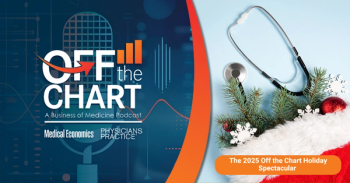
What happened to the opioid crisis?
Opioids once dominated headlines, but then came COVID-19. What happened to all the patients struggling with addiction?
Prior to the COVID-19 pandemic, headlines were dominated by the opioid crisis that had hit every part of America. The public was struggling to find answers to a problem that affected rich and poor, both in urban areas and small rural towns. When the pandemic broke out, all the attention shifted away from the opioid crisis to this larger global threat. While it may have fallen out of the headlines, opioid addiction has not gone away.
Medical Economics spoke with Nishi Rawat, MD, MBA, critical care physician, senior vice president, Appriss Health, and co-founder of OpenBeds, to discuss how COVID is affecting the opioid crisis.
[Editor’s note: The transcript has been edited for clarity and brevity.]
Medical Economics: Prior to COVID, the opioid crisis was dominating headlines, and now you hardly hear anything about it. What affect has COVID had on the opioid problem in this country?
Nishi Rawat: The early data right now suggests that at least with the number of overdoses, that number has increased during the pandemic. That being said, it looks like that number was going up prior to the pandemic, looking at January to January data. So you've got those CDC data suggesting that there's a problem, and the AMA recently came out with a brief saying they've talked to 40 states and the data that they have accumulated from those states and other sources suggests that the overdose rate is going up, as well. So in short, it looks like the problem is getting worse.
Medical Economics: Has COVID contributed toward creating new addiction problems with people? Or is it just made the existing problem worse?
Rawat: Well, we know from public health experts, people on the ground, treatment providers, physicians, that those who suffer from a substance use disorder, their condition is being exacerbated because of stress, isolation, and financial hardship associated with the pandemic. The CDC did a survey of about 5,000 people over the summer. And you know, it was really interesting. About 13% of people said that they had either started to use substances or their existing substance use increased as a result of stress related to the pandemic.
Medical Economics: Are there more relapses of addicts during COVID, because of the mental health strain it's put on them?
Rawat: What we're hearing from our customers, state governments, county governments, as well as users and treatment provider clinicians on the ground, is yes. The prevalence of mental health conditions as well as substance use is going up. They're telling us that more people are seeking treatment, as well. Just going back to that CDC study again of 5,000 people over the summer, 40% of those people surveyed said that they were suffering from one of the common mental health conditions like depression, anxiety, or post-traumatic stress, along with substance use, and 40%, that's pretty significant. And then, you know, even worse, I think it was around 10 or 11% of respondents who said that they had considered committing suicide in the past 30 days. Now, there's a study that just came out of the Brigham and Women's Hospital in Massachusetts, which looked at suicides, the rate in Massachusetts, pre- and post-pandemic. And that evaluation suggests that there hasn't been an increase, and as you probably know, Massachusetts has had the longest shutdown. But I think it's just it's early to tell. We'll see how this plays out over time.
Medical Economics: Because of COVID, a lot of patient visits have gone to telehealth or appointments have been canceled. Has this contributed to the opioid problem where doctors aren't seeing patients regularly or may have missed warning signs because it's a telehealth visit instead of a regular visit?
Rawat: Again, I think it's hard to say. The early data from the CDC suggests that at least the overdose rate for all substances, not just opioids, that's gone up during the pandemic. But again, that rate was going up prior to the pandemic. I think that the pandemic has disrupted access to behavioral health treatment for some and then improved access for others. So, prior to the pandemic, telehealth was still pretty edgy and innovative, right? It wasn't mainstream. And now, especially when it comes to delivering behavioral health treatment via telehealth, now it's mainstream and you have all of these people who wouldn't have otherwise had access to behavioral health treatment, substance use counseling, mental health counseling, and they have access to it via telehealth and other applications, via an app or chat or text message. So in a way, I feel as though the pandemic has accelerated the progress of these technologies, the use of these technologies such that it's democratized access to behavioral health treatment. But on the other hand, absolutely, we're hearing from our providers, users, and customers on the ground that their patients are struggling.
Medical Economics: What can primary care doctors do to help reduce opioid addiction during COVID?
Rawat: Primary care doctors can do a lot. They are on the front lines right now for stress and anxiety related to the pandemic, along with mental health conditions, as well as opioid use and substance use in general. And so primary care physicians are and should be asking their patients, “How are you doing?” So informal questioning regarding their patient's overall state, but then primary care physicians also should be doing validated assessments at regular intervals for mental health conditions, for common conditions like depression and anxiety, along with screening for substance use. I think that's the first step. And then when you identify that someone is suffering from mental health condition or substance use, we need to meet people where they're at and offer them support, if that's what they're seeking. And that may come in the form of an initial conversation, referral to assessment, referral to treatment, again, depending on where they're at. But primary care physicians, I believe, play probably the most important role right now with respect to identifying and managing mental health and substance use conditions.
Medical Economics: How can technology help solve the opioid epidemic and the associated mental health issues that go with it?
Rawat: In my opinion, I don't think that technology can solve this. It really does take a village—it takes a cooperative effort on behalf of the public sector, the private sector, the medical realm, the criminal justice system, and others in the behavioral health treatment realm. Everyone needs to work together. And technology does play a role. As I mentioned, you had these technologies pre-pandemic that were percolating in and now they're mainstream, and the silver lining is that there are more people, in my opinion, who have access to behavioral health treatment. Now it's a little bit controversial, as to the quality of some of this tech-enabled support and treatment. Maybe this app isn't certified. How do we know that it works? Does it provide the level of therapy that one can get via an in-person visit? Maybe not. But I do think that we can only get better from here on in.
Newsletter
Stay informed and empowered with Medical Economics enewsletter, delivering expert insights, financial strategies, practice management tips and technology trends — tailored for today’s physicians.








